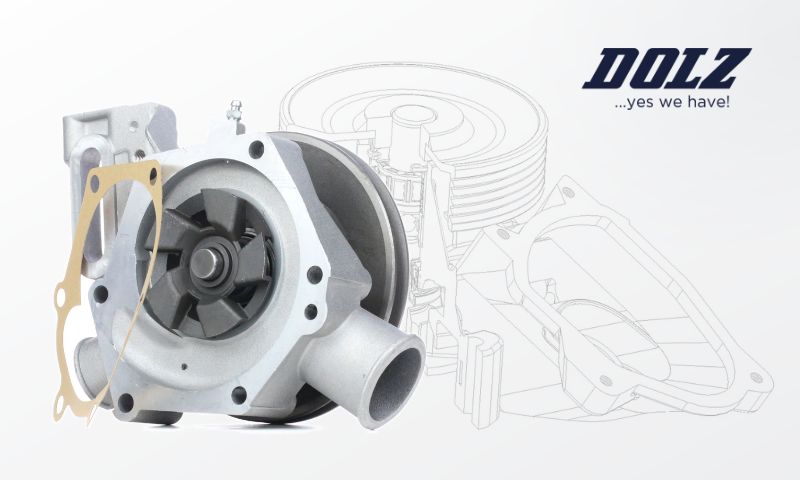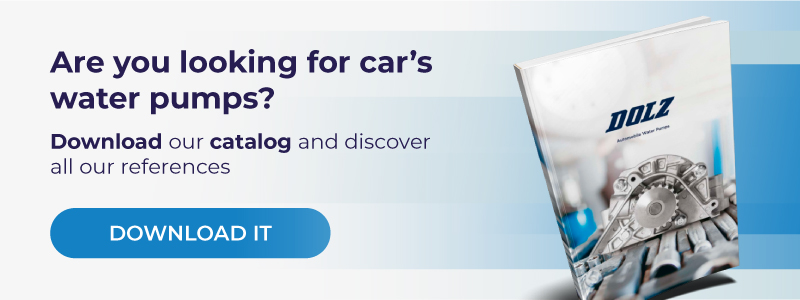Modern vehicle engines have different components and auxiliary systems for their operation. As we know, the engine is like the heart of our car. It means, without an engine there is no movement. But, to convert the heat generated by combustion into mechanical energy, it is essential that the engine maintain its service temperature, which will be possible thanks to the cooling system.
Where a car’s engine is housed, there are several systems in charge of making it work as it should. Among them, the cooling system where the engine water pump is a key component, helps to lower the excessive temperature of the engine dissipating excess heat.
Find out everything you need to know about the water pump, what role it plays in your engine, and how to choose the correct water pump to ensure efficient driving.
What does the engine water pump do?
Simply put, an engine water pump is at the heart of an engine’s cooling system (without it, the system would not be able to fulfill its purpose). Thanks to the water pump, which operates together with the thermostat and the radiator, it is ensured that the engine block maintains the correct temperature, preventing overheating and optimally completing combustion.
As we’ve seen, the job of the engine water pump is to circulate coolant that absorbs heat, the full circuit being receiving coolant from the radiator and sending it through hoses to the engine. Once it reaches it, the coolant liquid absorbs heat and goes back to the radiator, where it’s cooled so that the cycle can start again. All this allows the combustion engine to reach its intended service temperature as soon as possible and maintain optimal conditions in different load situations.
Thus, the water pump is essential for the proper functioning and durability of the cooling system and the overall operation of the engine. It’s important to ensure that this system has the best possible quality and therefore contributes to good thermal management of the engine.
Basic parts of an engine water pump
- Impeller: It is a rotor that is used to increase the pressure and flow of liquid inside a water pump. In other words, the impeller is the heart of a water pump, and without it, the entire system can fail.
- Housing: responsible for protecting the water pump from external damage, as well as preventing the coolant from leaking out of the circuit and damaging the engine. They can be made from aluminum, cast iron or steel.
- Spindle bearing: it represents the mechanical support enabling the shaft to move continuously and steadily. It receives the turning force from the pulley and transfers it to the next component in line, which is the impeller.
- Hub or Pulley: it acts as the power source for the impeller, thus generating the rotation forces needed to the engine water pump to function.
- Seal: it’s in charge of preventing leakages and avoiding bearings from being contaminated. It plays an important role in keeping the water pump intact.
Related content: Discover the main parts of a car engine (and its functions)
The relationship between the water pump and the engine
The purpose of the water pump is to counteract the increased heat produced by the engine. It would not be possible to dissipate the excess heat generated by combustion or to cool it faster and more efficiently without a water pump in the cooling circuit.
All in all, the performance of the different parts of the engine and the water pump is intrinsically connected: the power consumption of the water pump thereby increases in line with the engine speed. In fact, if your water pump stops working, your engine could fail.
Understanding the engine cooling system
A typical engine cooling system comprises the following components:
- Radiator, which acts as a sort of heat exchanger through the use of many fine tubes in charge of receiving and cooling the liquid sent from the engine. Radiators pass excess heat into an airstream, effectively cooling the liquid that is then returned to flow back into the channels.
- Water pump in charge of circulating coolant. As we’ve seen, it’s driven by pulley and belts from engine crankshafts. It will send coolant down through the radiator, assisting in the circulation of the coolant.
- Thermostat, in charge of adjusting the level of coolant that will later circulate into radiator.
- Fans, driven by belts, it is responsible for pulling out air through the radiator.
- Hoses, where the coolant circulates.
- Coolant, the liquid in charge of absorbing heat from the engine and circulating through the whole cooling system. It is highly recommended to always use the antifreeze that’s recommended by your car manufacturer and never use water.
Keep reading: Engine cooling system: how it works and main components
Expert manufacturers of engine water pumps
One consideration to keep in mind after what we have seen in this post is that the process of choosing the right water pump brand can make a difference in engine efficiency and durability.
At Dolz we produce and distribute quality water pumps for passenger cars and industrial vehicles as part of the independent aftermarket.
As such, we’re in charge of manufacturing more than 5.5 million water pump units per year. Our water pump catalogue includes 1,300 references: 900 for passenger cars (of which 230 are specifically for Asian applications, and another 200 for hybrid and gasoline cars) and 400 for trucks (trucks, vans, tractors, 4×4, 4×5, 4×6, 4×7, 4×8, 4×9, marine applications, forklifts, industrial engines).
Get in touch with us and discover our full range of products.


